隐匿在城市的历史容颜
◇ 文 | 本刊记者 胡 婷 图| 游 宇

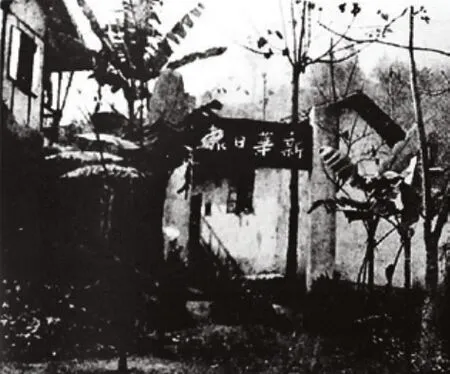
化龙桥虎头岩《新华日报》总馆
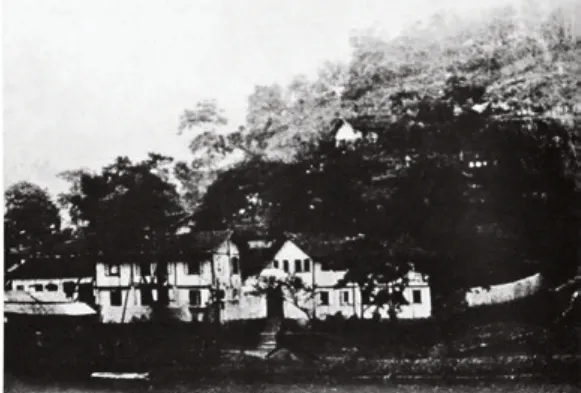
在渝中区,虎头岩下,化龙桥一带,如今有个时髦的地方,“重庆天地”。新建的高档小区、商场,使这一地段成了高端的代名词。
在这里的城市深处,隐匿着一段特殊的历史。当年,在抗战最紧急的关头,《新华日报》在虎头岩下,发出了强劲的声音。
Located beneath the Hutouyan scenic spot in Yuzhong District, near Hualongqiao Street, Chongqing Tiandi has enjoyed an enviable reputation for high-end zone, where fancy residences and stylish shopping malls are newly built.
A piece of special history was hidden in this city.During the critical time in Sino-Japanese War, Xinhua Daily had played a very important role.
寻访低调中的壮怀激烈
Look for the Great Aspiration from the Low Proベle
说起《新华日报》,大多数重庆人都能记起渝中区民生路上,一幢三层砖木结构的楼房。事实上,那里是《新华日报》当时的营业部。1938年1月11日,《新华日报》在武汉创刊,同年10月25日迁往重庆继续出版发行,报馆位于苍坪街和西三街。
1939年,“五三”“五四”大轰炸后,报馆被炸毁,总经理熊瑾玎四处打探,将新的馆址选在了化龙桥虎头岩下,一个叫做“陈独立堂”的地方。当年8月13日,大轰炸后的第一张《新华日报》就在这里出版了。
找到这个地方,颇费一番周折。
重庆天地一处建设工地,一名建筑工人听说我们在打听《新华日报》总馆旧址,主动当起了领路人。从嘉滨路华村公交站下车,往虎头岩走上一公里山路,废弃的成渝铁路桥出现在眼前。
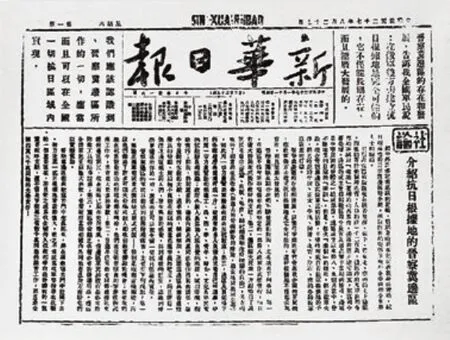
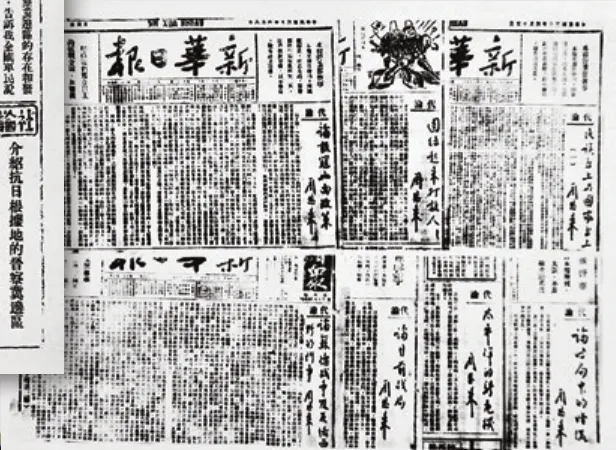

“沿着铁路往下,再绕过山弯弯,顺着下面那条路,一直走下去就到了。”从山上望去,在黄葛树掩映下,建筑物似乎已无迹可寻。带着不确定性,我们慢慢走近,直到看见一扇大门的石墙上,清晰镶嵌刻着“新华日报馆旧址”字样的匾额。
这里是化龙桥虎头岩村86号。2011年7月7日,《新华日报》总馆旧址正式复原开放,它坐落在美丽的嘉陵江畔,背倚巍巍虎头岩,修复的总馆基本保持了原址原貌。
走进大门,五栋房屋依山而建。绿林掩映下,蓝灰色外墙的砖房古朴中显现着一种苍老。
Most local people still remember the threestorey house with brick-wood construction in the Minsheng Road, Yuzhong District, the initial business office of Xinhua Daily. Founded in Wuhan in Jan.1, 1938 and removed to Chongqing in Oct.25 of the same year, the office was located in Cangping Street and the Xisan Street respectively.
However, the newspaper office was destroyed by the successive bombings on May 3 and May 4, 1939. The manager Xiong Jinding decided to establish a new one at a place named Chendulitang beneath the Hutouyan near Hualongqiao Street.The first issue of Xinhua Daily newspaper after the deadly two bombings was published here.
It took efforts to find this place.
At one construction site in Chongqing Tiandi,a worker volunteered to be our guide, taking us to the former site of the Xinhua Daliy. Getting off from the Huacun bus station at Jiabin Road and taking one-kilometer mountain road toward the Hutouyan,the abandoned Chengdu-Chongqing Railroad bridge showed ahead of us.
“Go down the railroad, bypass the mountain road and then go straight,” said the worker. From the top of the hill, the office seemed unseen with thick trees covered. We approached slowly with uncertainty and finally arrived at the front door. There was a tablet suspended on its stone wall, writing The Old Site of the Xinhua Daily News Office.
Here was the No.86, Hutouyan village,Hualongqiao. Located at the beautiful Jialing river bank, leaning the towering Hutouyan, it was reopened to the public after restoring since July 7,2011. The original appearance had been preserved.
Getting into the front door, we could see five houses surrounded by the mountain. Shaded by green trees, the blue gray wall of the house revealed with primitive simplicity and a sense of history.
宁静的当下与不平静的过往
Quiet present and unquiet past
与苍老相呼应的,是这里的宁静。而脚下沉淀的,却是一座里程碑。
透过树叶扶疏的甬道望去,依次排列着《新华日报》总馆的经理部、总务科、传达室、编辑部(白班及夜班)、排字房、会议室、会客室、员工宿舍、装订房、资料室等房间。
走进陈列室,文字、图片及实物陈列、文献档案,又将我们脑中的设想填充得更饱满。
郑之东,1943年至1946年期间,曾两次参加《新华日报》的副刊编辑工作。“回想起抗日战争胜利前后那风云激变的日子里在《新华日报》这个革命阵地上的战斗,心中永远是热乎乎的;像一匹老战马一样,想奔驰,想冲锋。”他还记得,新闻版的同事下班时间很晚,那时重庆经常停电,有时要点汽灯,有时就只好点起蜡烛来改排、改拼版子。
更加铭心刻骨的记忆,来自应对国民党反动派的报刊检查。1943年,毛泽东《在延安文艺座谈会上的讲话》发表后,全文传到重庆,交给新华日报报馆。按当时检查“行情”来看,原文抄送检查显然不能过关。大家研究后,决定采用“化整为零”的战术,由三位副刊编辑把全文“化”为三篇文章,尽量摘录原文,要么就是概述,然后分作几次,搭配一些言辞激烈的政论短评一齐送检。果然,三篇文章慢慢都盖上了“检讫”的图章。1944年元旦,报纸用了一个整版,加上醒目标题《毛泽东同志对文艺问题的意见》。
The tranquility here echoed with the long history,while what hided underfoot was a milestone.
Seeing from the pathway with exuberant trees, we noticed that along the way lined the Manager Office,General Affairs Division, Reception Office, Editorial Office, Typesetting Room, Meeting Room, Sitting Room, Staff Quarters, Binding Room, Archives Room and so on in sequence.
Walking into the exhibition room, we learned the history through the reports, pictures, some relics and archives here enriched our mind.
Zheng Zhidong had been a supplement editor of Xinhua Daily twice from 1943 to 1946, in his words,being thrilled when every time he recalled those drastic days working there during the Sino-Japanese War. He worked like a senior steed that tried to gallop and charge forward. When colleagues of news column worked late, with frequent power outages in Chongqing, only gas lamps and candles were available.
The memory of Kuomingtang’s inspection of newspaper was more than vivid. In 1943, after Talks at the Yan’an Forum on Literature and Art delivered by Mao Zedong , the whole passage was faxed to Xinhua Daily. It was impossible to publish such a revolutionary article, concerning the inspection standard then. The office determined to cut the whole into three parts and rewrite it as faithful as possible.Then the three passages were submitted respectively with other sharper political essays, which tricked the inspection as expected. On New Year’s Day in 1944,a whole page in Xinhua Daily was print them with an outstanding headline--the View of Comrade Mao Zedong About Literature and Art.
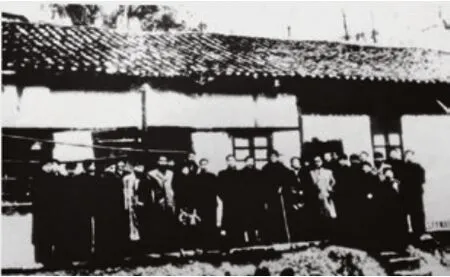
1957年2月5日,周恩来重返重庆化龙桥《新华日报》总馆时与随行和陪同人员在原报馆编辑部门前留影。
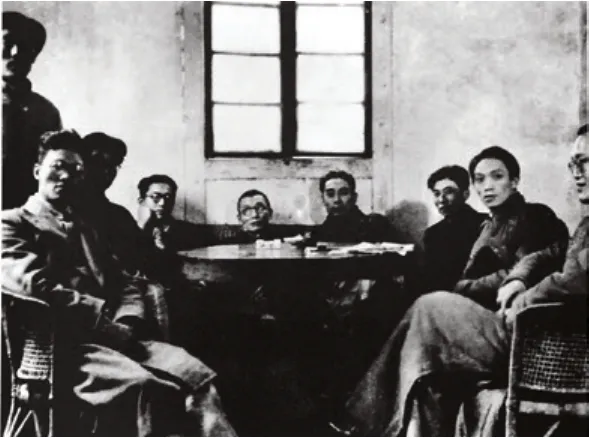
毛泽东为这支“新华军”点赞
Thumbs-Up for Army of Xinhua Daily
此刻的报馆在虎头岩山谷的角落里,沉静而安宁,往事的轰烈更为震撼。
20世纪40年代,延安的《解放日报》和重庆的《新华日报》是中共党报历史上两份里程碑式的报纸。前者文风直白通俗、情绪鲜明,以此动员边区读者。在重庆,《新华日报》则以团结抗战和统一战线为旗帜,团结社会各界人士、群体,进行抗战动员。
1947年2月28日,重庆的《新华日报》总馆被国民党无理查封,结束了它七年半的革命生涯。在《新华日报》出版的3231期报纸中,有近3000期都是在重庆出版。《新华日报》是中国共产党在民主革命时期发行时间最长、发行量最大、影响最广的一份报纸,立下了“赫赫战功”。
1941年1月6日,国民党顽固派制造了震惊中外的“皖南事变”。周恩来愤然挥笔题词——“千古奇冤,江南一叶,同室操戈,相煎何急?!”“为江南死国难者志哀”。18日黎明前,就是在重庆《新华日报》总馆的防空洞内,印有周恩来手迹的报纸大量印刷,送到读者手中,张贴在重庆的大街小巷。
“皖南事变”真相从山城传开。
“皖南事变”后,周恩来还将《新华日报》编印的大量材料,动员外国记者带到香港、南洋、美国发表,揭露蒋介石的阴谋。
1945年9月,毛泽东赴重庆谈判期间,这样评价《新华日报》的成绩:我们不仅有一支八路军、新四军,我们还有一支“新华军”。
多年后,报馆的托儿所和食堂等房屋早已倒塌,所幸编辑部和排字房等几间主要的房屋还在,1949年10月以后,一直作为附近工厂的职工住房,后来也成为危房。1982年,重庆市政府将整栋楼收归红岩革命纪念馆,红岩联线的专家按照当年的原样修复。
走出报馆,周围已是高楼林立,还能听到附近施工队轰鸣嘈杂作业的机器声。老报馆还在,静静地立在现实里。
The office now lies in the valley of Hutouyan Mount with serenity, yet abounding with a breathtaking history.
There were two milestones in the history of the party newspaper of the Chinese Communist Party,namely Jiefang Daily in Yan’an and Xinhua Daily in Chongqing in 1940s. As the former’s simple and encouraging words kept people up, the latter was committed to unify and hearten every Chinese people and social groups, taking the banner of solidarity and a united front to fight against Japanese invasion.
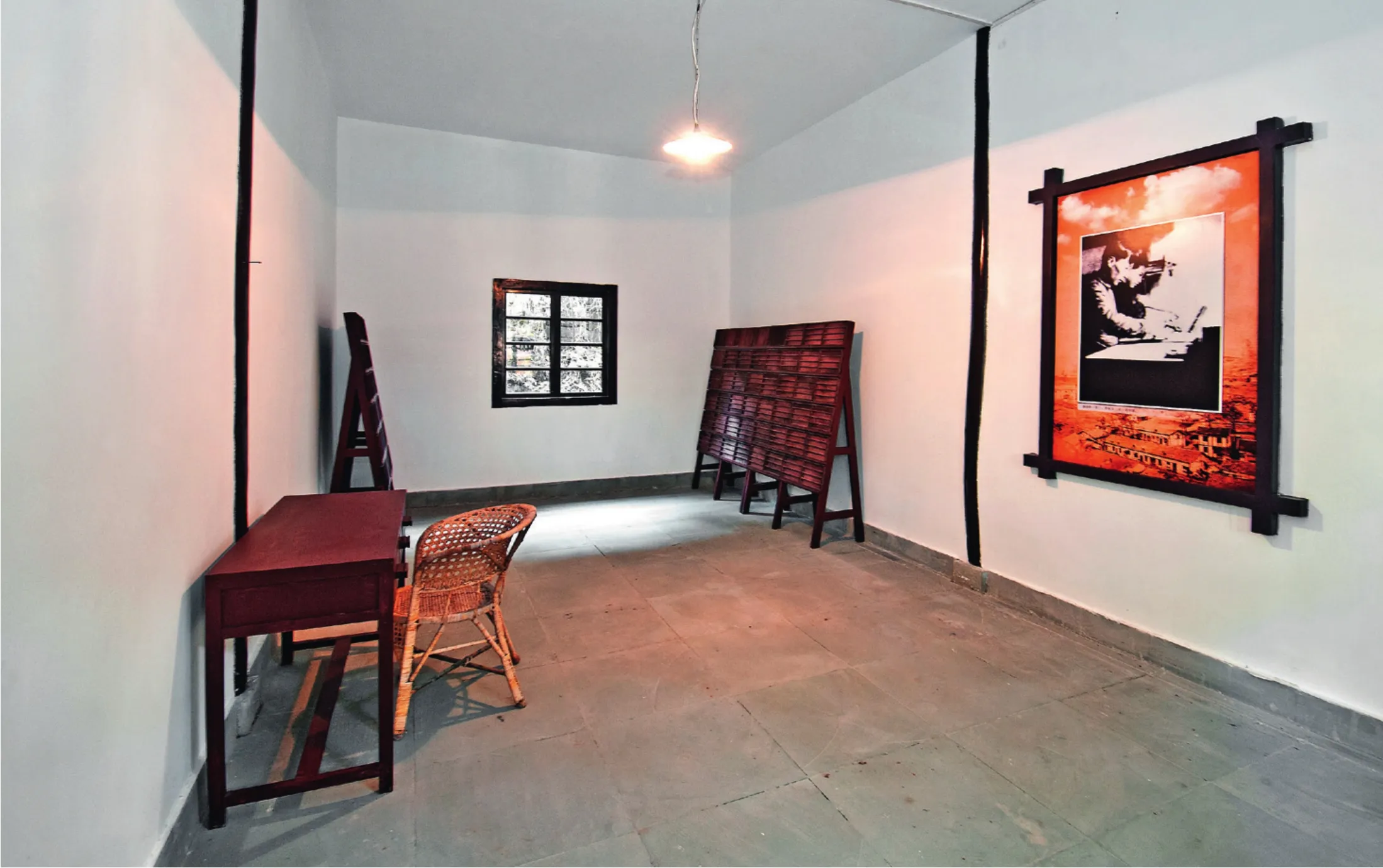
Xinhua Daily was closed down by Kuomingtang on Feb. 28,1947 with no proper reason, thus finishing her seven and a half year’s revolutionary career. Nearly 3000 of 3231 issues were published in Chongqing, making it the most time-honored and popular newspaper with the largest circulation issued by CCP during the period of democratic revolution, which had made remarkable achievement.
When South Anhui Incident occurred in China Jan.6th 1941 by the diehard in Kuomingtang, he brushed his indignation into soaring words. At predawn, in Jan.18, the newspaper with Zhou Enlai’s handwriting was printed in a bomb shelter,delivered to households and pasted around every corner in Chongqing.
The truth of South Anhui Incident spread from Chongqing.
After that, he kept a close contact with foreign journalists and introduced them many a related information offered by Xinhua Daily so as to unveil Chiang Kai-shek’s intrigue to the world.
Mao Zedong appreciated Xinhua Daily like this: we possess not only the Eighth Route Army and the New Forth Army but also an army of Xinhua Daily, when visiting Chongqing for a peaceful talk in September 1945.
Years later, its nursery and canteen have long gone, but fortunately the main building for editing and typesetting survived, accommodating workers in neighboring factories since October 1949 and getting dilapidated afterwards. The local government of Chongqing made it a part of Hongyan Revolutionary Memorial Halland and many specialists restored it according to its original form.
Walking out of the office, you will be surrounded by high-rise buildings and hear the roar of engines from the nearby construction workers. The old museum is still here, standing quietly in the real world.

